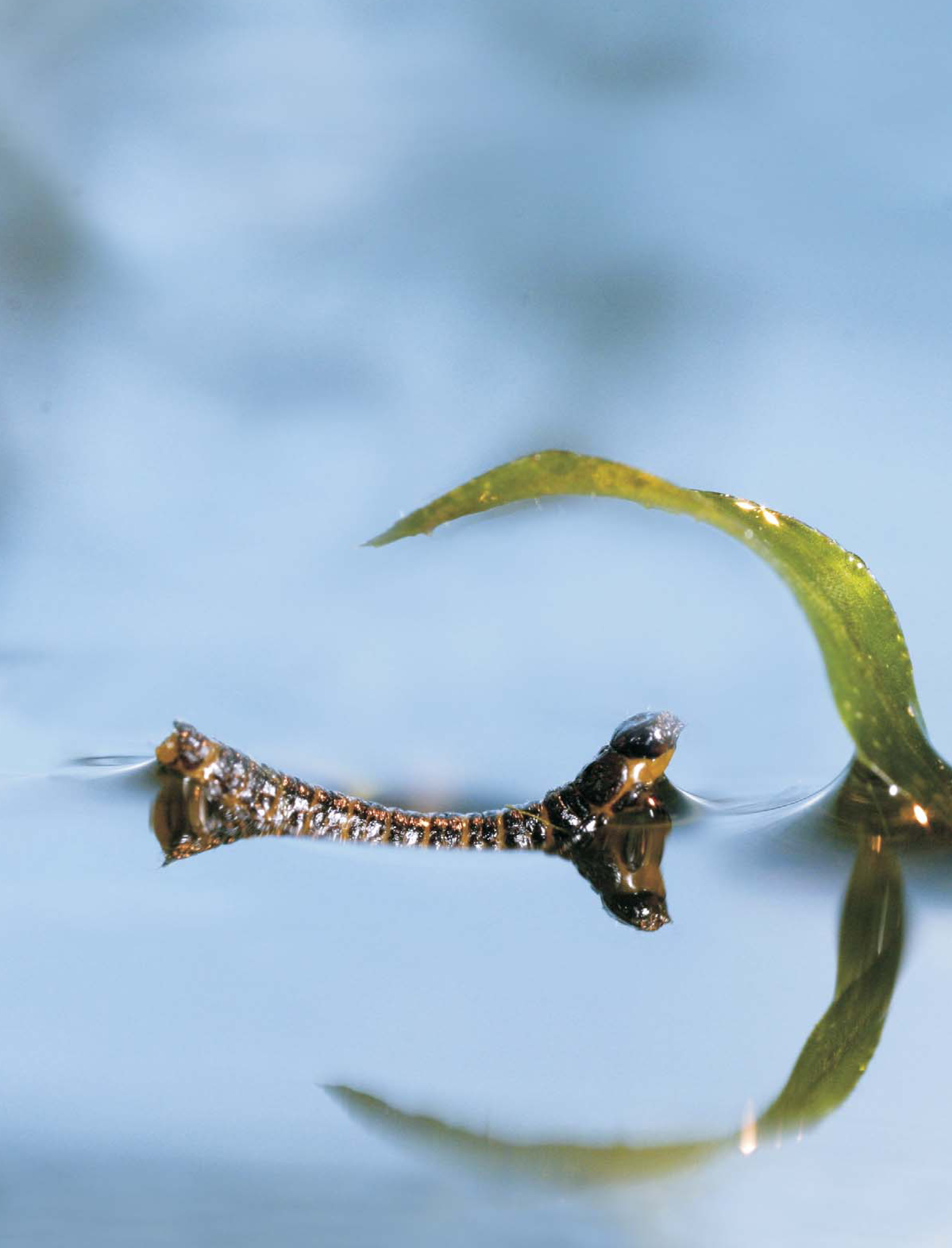Meniscus climbing
DOI: 10.1063/1.2709570
Some insects can walk on water. But the waterlily leaf beetle larva isn’t one of them. If a beetle larva falls into the water, it must not only reach dry land or emerging vegetation but also manage to climb the slippery meniscus at the water’s edge. Fortunately, the beetle larva has developed a novel means of propulsion to escape from the water and ascend to safety: By arching its back, it deforms the water surface and generates lateral capillary forces that can propel it up the meniscus’s slope.
With its back arched, the beetle larva seen here generates its own menisci at either end of its six-millimeter-long body. The two menisci are attracted to that adjoining the leaf, and the resulting force on the larva takes it toward the overhanging leaf at speeds that can exceed 10 cm/s. Viewed in terms of energy balance, the increase in gravitational potential energy as the larva ascends toward the leaf is less than the increase in surface energy caused by the surface deformation. To learn more about meniscus climbers, see D. L. Hu, J. W. M. Bush, Nature 437 , 733 (2005) and J. W. M. Bush, D. L. Hu, Annu. Rev. Fluid Mech. 38 , 339 (2006).

(Image courtesy of Lucy Mendel, David Hu, and John Bush, MIT.)





